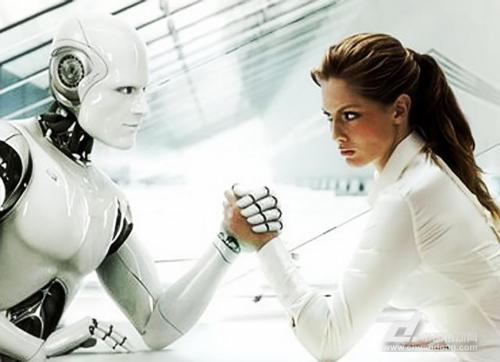In recent years, the combination of artificial intelligence and medical treatment has given rise to many opportunities for innovation and entrepreneurship. These have also brought new experiences to medical visits: wearable robots that can read human neural signals, and virtual nurses use artificial intelligence technology for data analysis. Assessing the overall state of the patient and combining artificial intelligence technology to provide telemedicine services...
Right now, this cutting-edge technology such as blockchain, big data, and artificial intelligence is all in the medical field. How to play health care later? How to change?

Future medical data, samples, artificial intelligence
Liao Jieyuan, Chairman and CEO of Micromedicine, pointed out in the “New Times and New Development” Tsinghua University’s Wudaokou Finance EMBA&EE2018 New Year’s Idea Exchange that the lack of family doctors, the high cost of medicine circulation, and the low efficiency of medical insurance are urgently needed in the medical and health field in China. Three problems, and "Link + AI" will bring changes to doctors, medicine and health care.
According to Yu Rong, Chairman of Midea Health Industry Holdings Co., Ltd., there are data, samples, and artificial intelligence in the future. There are various excellent methods of genetic engineering and information technology, and you will see very different medical scenarios and changes. s efficiency.
“There are 8 words called 'precise prevention, human-machine integration', which means that in future medical scenarios, personalized prevention and intervention relying on accurate data, and relying on human experience and the intelligent combination of machines at the treatment end Such system tools will bring new medical experiences, and will bring about some disruptive institutional changes in the existing healthcare structure,” said Yu Rong.
Liao Jieyuan described the current medical situation of micromedicine: Micromedicine firstly linked up more than 2,400 large-scale tertiary hospitals, more than 17,000 primary-level medical institutions, and more than 100 million households to achieve the goal of moving high-quality medical resources to primary medical care structures. And family, complete the advance of the scene. The “Medical Medicine Cloud” Western medical intelligence application developed by the micro-medical doctor and “Huayun Cloud” Chinese medicine intelligent application have enabled the primary doctor to grow into an outstanding general practitioner with the help of the AI assistant.
This also links pharmaceuticals and medical scenarios directly, which can greatly reduce the circulation of medicines. In addition, through more scientific predictions, “Link + AI” can improve the health insurance company’s service capabilities and improve the efficiency of the use of TCM in the entire medical treatment process.
"The value of the data in the future, we have no way to imagine his boundary." Yu Lv pointed out that in the past year, the company has served 20 million people, and in the next 3 to 4 years, it is expected to serve one. 100 million person times. The possible effects of these data can be summarized as: Precise forecasting of the future; The possibility of detonating new business models; Finding correlations and patterns in existing data, including new drug development, early tumor diagnosis, etc.
In addition, Yu Mong also stated that the advancement of customs clearance and prevention priorities are irreversible trends in this era. Prevention-related vaccines, cancer screening, early diagnosis, artificial intelligence disease risk prediction and assessment are the future trends. No country or organization can resist the soaring social costs of aging.
The integration of science and medical care also requires teamwork and cultural integration
However, the medical industry, which has a high threshold, many links, and complex issues, is also the most special area of application and integration with artificial intelligence. Technically requires strong support.
Director of the Department of Computer Interaction and Media Integration at Tsinghua University, Director of the Pervasive Computing Research Department of the National Laboratory for Information Technology, and Shi Yuanchun, Dean of the School of Global Innovation (GIX), believe that in the Pervasive Computer era, with more embedded The emergence of type equipment, how to more naturally carry out information exchange between man-machine is of great significance. The purpose of human-computer interaction is to make the machine more understand "you" and make users more comfortable.
"In the future, it is expected to capture all gestures and behaviors of the user through data collection and modeling, so as to produce a mobile phone that truly understands the user and makes the perception of mobile phone interaction more accurate and intelligent." Shi Yuanchun said that the depth of application of artificial intelligence technology, Being able to interpret accurate intentions from obscure behavior habits will provide a reliable technical foundation for future ergonomics.
For the difficulty of integration of technology and medical care, Liao Jieyuan believes that the Internet and medical care are precisely two opposite areas. Medical care is expensive, conservative, and rigorous. The Internet is open, free, and free. In fact, there is a profound understanding of technology and medical care. The most difficult and biggest bottleneck in the integration is the integration of team, culture and ideas. This is the biggest challenge of internal integration. “We will also see that companies that can succeed in this area are actually the most important thing to do is to integrate the culture and do a good job in the outside world.”
LED Tube Cable,LED Lighting Outdoor Cable,LED Waterproof Connector Cable
Electronic Wire Harness Co., Ltd. , http://www.nsusbcables.com
没有评论:
发表评论